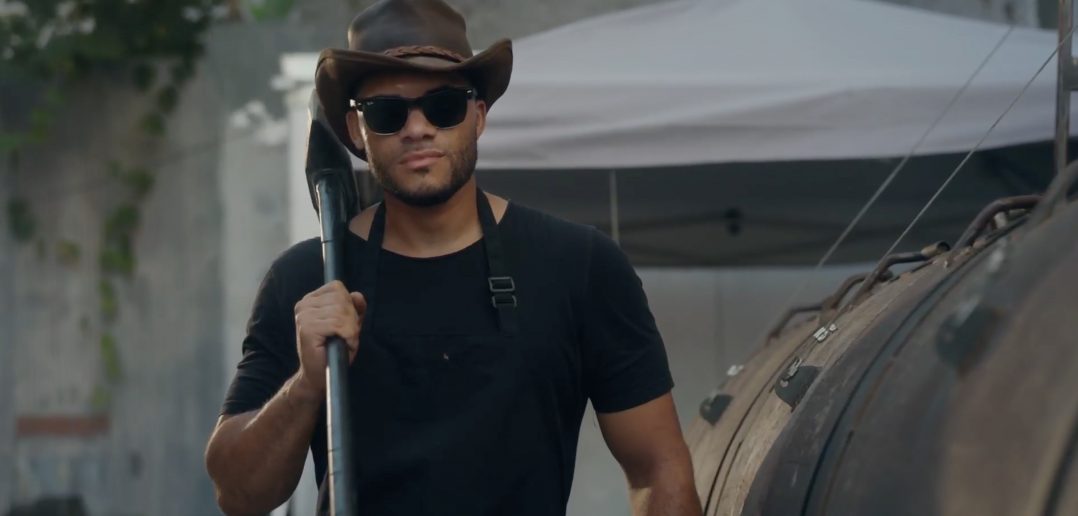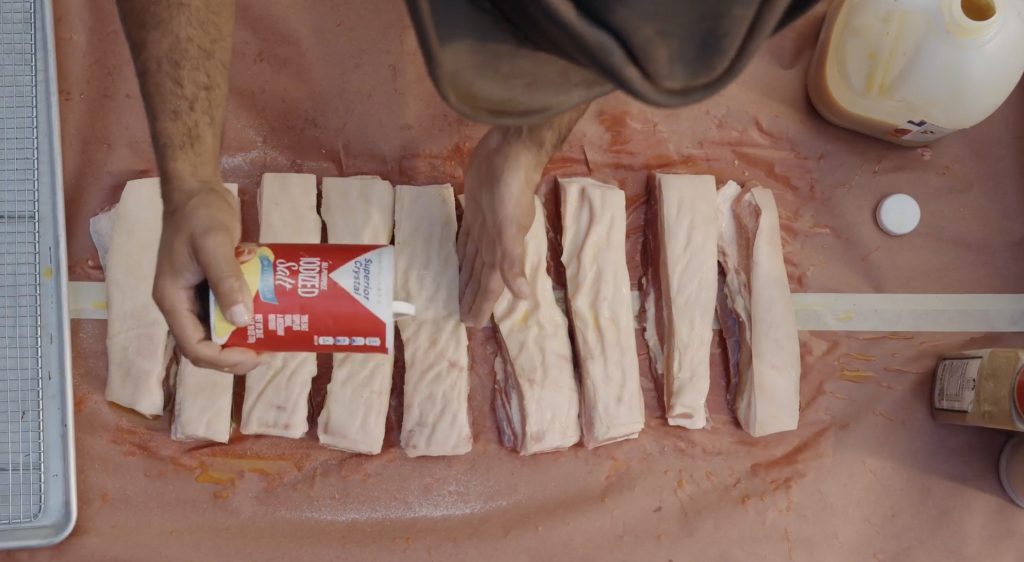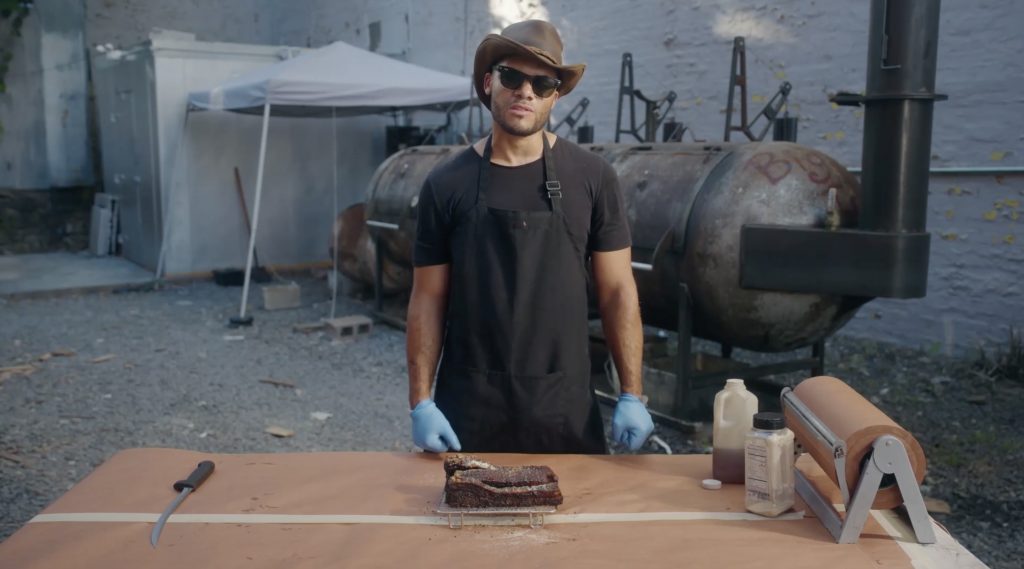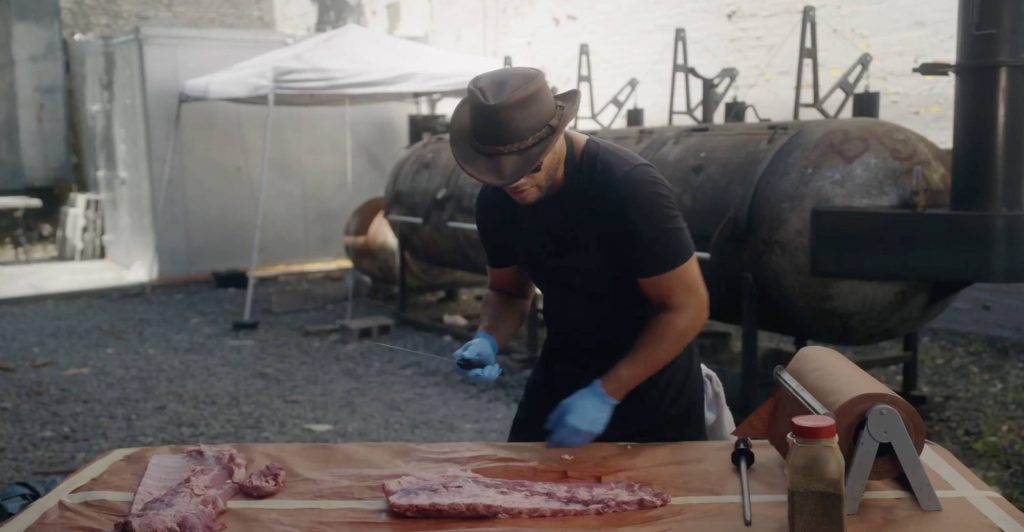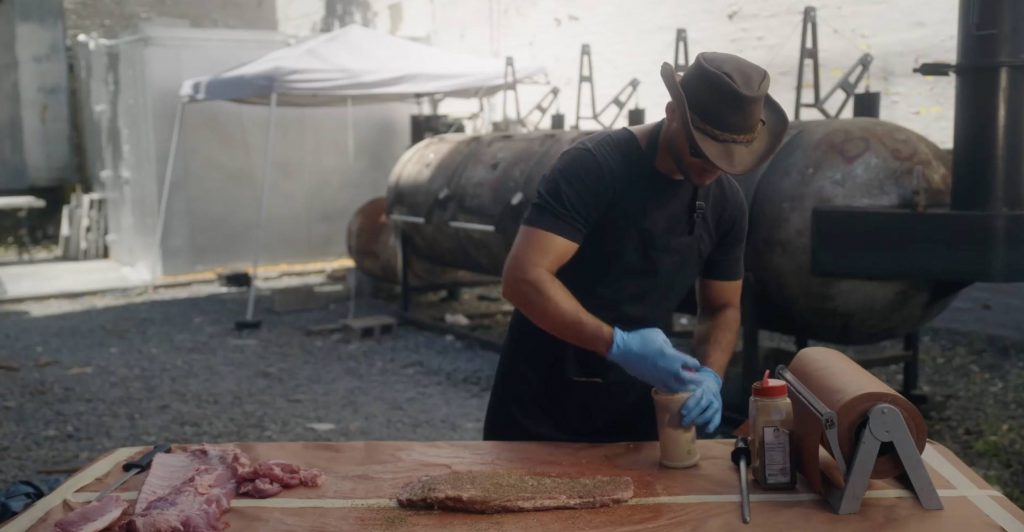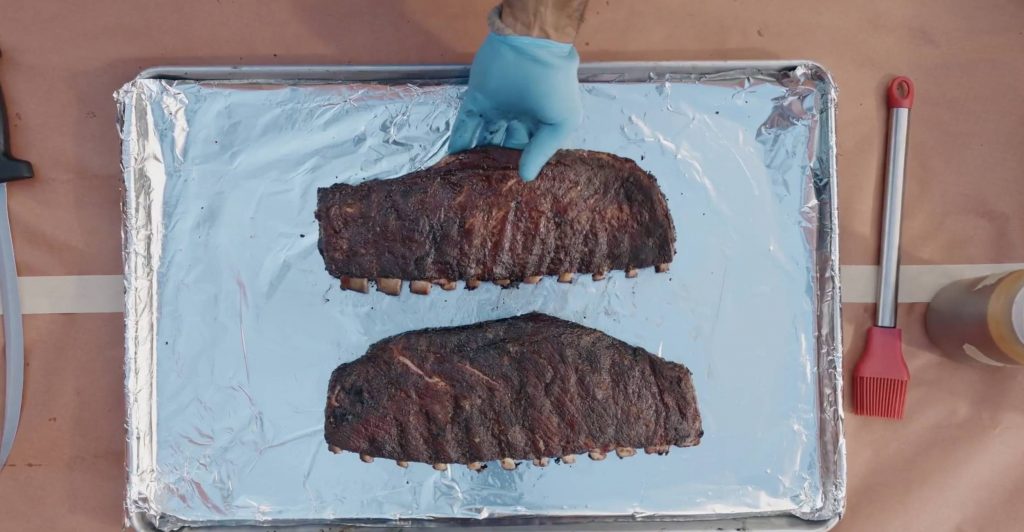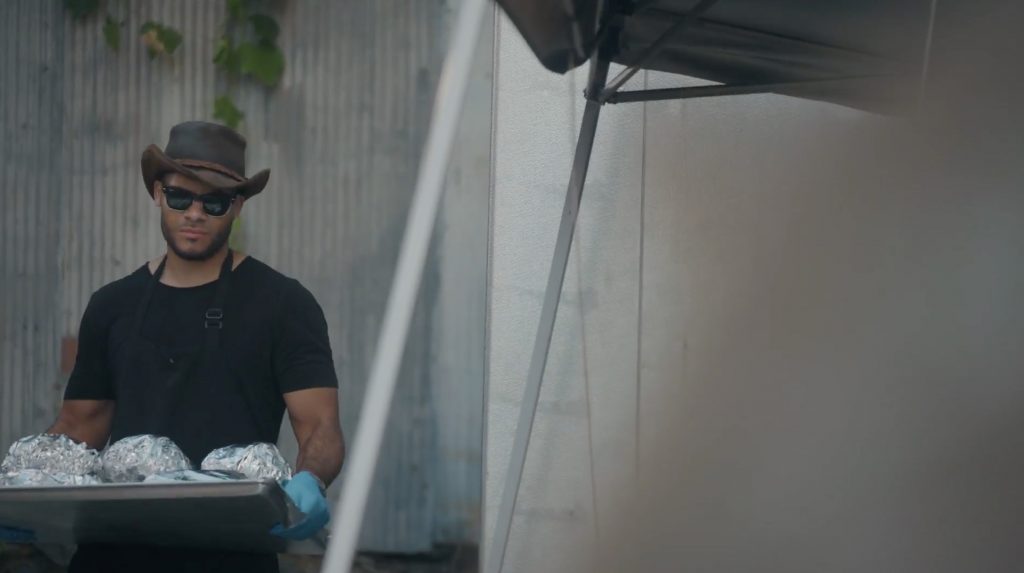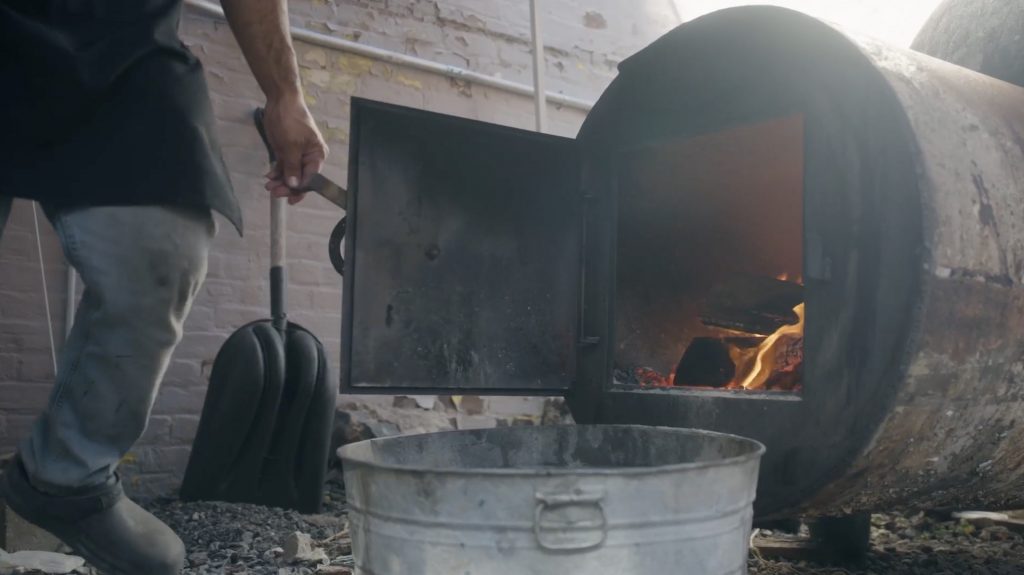Queens, New York native Ruben Santana is the owner and pit master of Bark Barbecue, a central Texas style and Dominican Republic influenced barbecue pop-up. Santana's DR roots and love for the art and soul of central Texas style barbecue have left many of his customer's hearts and bellies full.
Bark Barbecue started in Ruben Santana's backyard. He had always been interested in barbecuing and says he'd always grill at family gatherings. It wasn't until a family member suggested he start his own business that got him thinking: "What's the deal about barbecue?" After hearing about smoked Texas-style barbecue at Franklin's Barbecue, a renowned restaurant in Austin, Texas, he instantly became interested in experimenting with smoking some of his own. As Santana described it, the soul found in Texas-style barbecue was how he knew he had to bring it back to New York.
Santana specializes in cooking various cuts of meats like brisket, pork ribs, beef ribs, turkey and chicharron, a customer-favorite Dominican-style pork belly. His meats are cooked on an offset smoker and their only fuel source is white oak wood. He averages about 40 to 50 briskets for a weekend and cooks almost 1,000 pounds of meat on his 1,000- and 500-gallon smokers.
Recently, Santana invited SAS Explore conference attendees to check out Bark Barbecue and showed off his various meat-cutting and smoking techniques as well as some keys to his success. A barbecue fan myself and an appreciator of the art, I was excited to be able to get a chance to have a chat with Santana after the event. I wanted to know more about Santana and his artistic approach to barbecuing.
I believe cooking is an art form and each dish is your painting.
– Ruben Santana, owner, pit master, Bark Barbecue
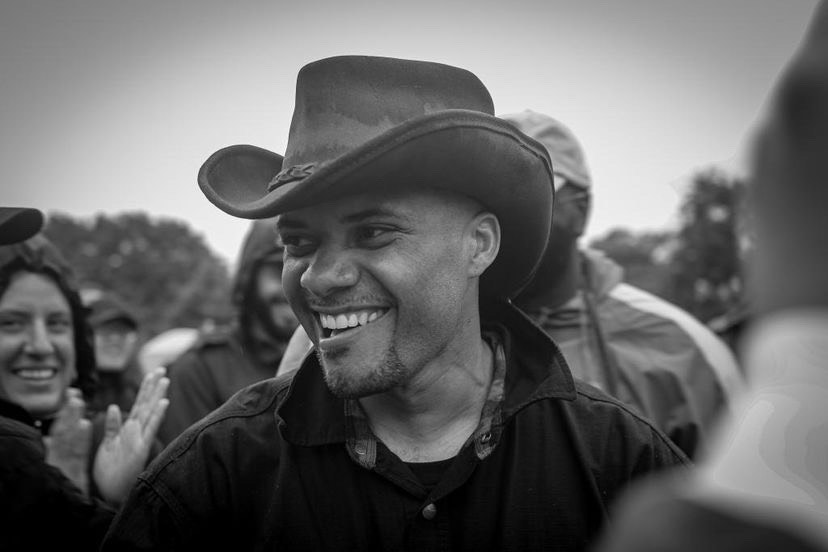
What's the difference between a Texas-style barbecue and a New York-style barbecue?
Santana: It's a night and day difference. I think of New York-style barbecue as high-end fast food. You get in line, get your brisket, get your ribs. It's almost just as if it's an assembly line. Texas is, as we Dominicans like to say, de campo that's the country down there. They can do things authentically. Many places in New York don't have "soul" to them. It's like a religion in Texas. When somebody has something so close to the heart like that, it will be different in how it is developed and cooked and how people see it and judge the taste.
What is life like outside of barbecuing? What other interests do you have?
Santana: Outside of barbecuing, I'm a father of two and they take up most of my time. Barbecue is really labor intensive and since I'm the only one currently who cooks, I have to take advantage of any free time I get with them. My interests are everywhere. I like reading, playing chess, going to the gym and watching anime. And I'm currently working on beating my best time completing a Rubix cube.
- Chicharron, a customer-favorite Dominican-style pork belly.
- Chicharron, a customer-favorite Dominican-style pork belly.
Do you ever travel and bring your Texas-inspired barbecue to other parts of the country and the world? Are you interested in crafting other barbecue styles and bringing them to Bark Barbecue?
Santana: We’ve only done pop-ups outside of NYC. We would love when the day comes that our food is available throughout the United States. However, we have a big following outside the country so plenty of customers come from all over the world. I definitely would like to incorporate any method that enhances the food experience, whether it's a barbecue style or a different open-fire cooking technique.
- Ruben shows his process of removing excess meat from ribs.
- Ruben uses his special seasonings before throwing the ribs in the smoker.
- Finished rack of ribs out of the smoker.
You have these massive smokers that can hold a large amount of meat and firewood and likely serve a reasonable amount daily. What are you doing to combat food waste?
Santana: Well, I believe a way of combating food waste is knowing what our customers consume the most weekly. And there are many tools for small businesses that assist in this, like product itemization and specific product order history. That way, we can more or less have predictive order history; however, you cannot account for bad weather that can keep customers from coming out. There are ways of incorporating leftover meats into side dishes that will be on special the next day. So cold food storage is very important as well.
Though you have these massive barbecue smokers and a good following, what innovative steps are you taking to take Bark Barbecue to the next level?
Santana: It’s not so much about innovation because, on the contrary, our method of cooking is primitive, ironically. But I feel giving birth to an awareness of the quality and labor required to produce this food without being this big and expensive restaurant is innovation. Because somewhere up to this point in NYC, quality has turned into more of a material and artificial compliment. And it isn’t a knock on any of the outstanding restaurants; however, I do know if you pay for an expensive plate in a high-end restaurant, the price isn’t a representation of solely the plate. The handling, the care, the sourcing of ingredients and attention to detail took place to put this plate together. However, many folks don’t know this, so they focus on the front end and some things get lost in the backend.
- Ruben prepares various types of meats.
- One of two of Ruben’s massive smokers.
You have learned a lot since starting to make barbecue professionally, but what other areas of your industry are you curious about learning more about? What keeps your mind wandering in the food industry?
Santana: I think there’s plenty to explore with the technique of smoked barbecue. There are so many dishes that can be created. However, I also believe a barbecue is a powerful tool in rallying people from all different parts of the world together. And that’s what I’m most excited about—meeting people from other places with different interests. I believe cooking is an art form and each dish is your painting. And I love seeing that I have an empty plate every morning when I wake up that I can put anything on.
How are you influencing the next wave of pit masters?
Santana: To be honest, I can’t answer that. You would have to do a survey; however, if I can influence creativity and urge people to do what they’ve always wanted without a second thought, that is really powerful and means a lot to me.
See who else spoke during SAS Explore